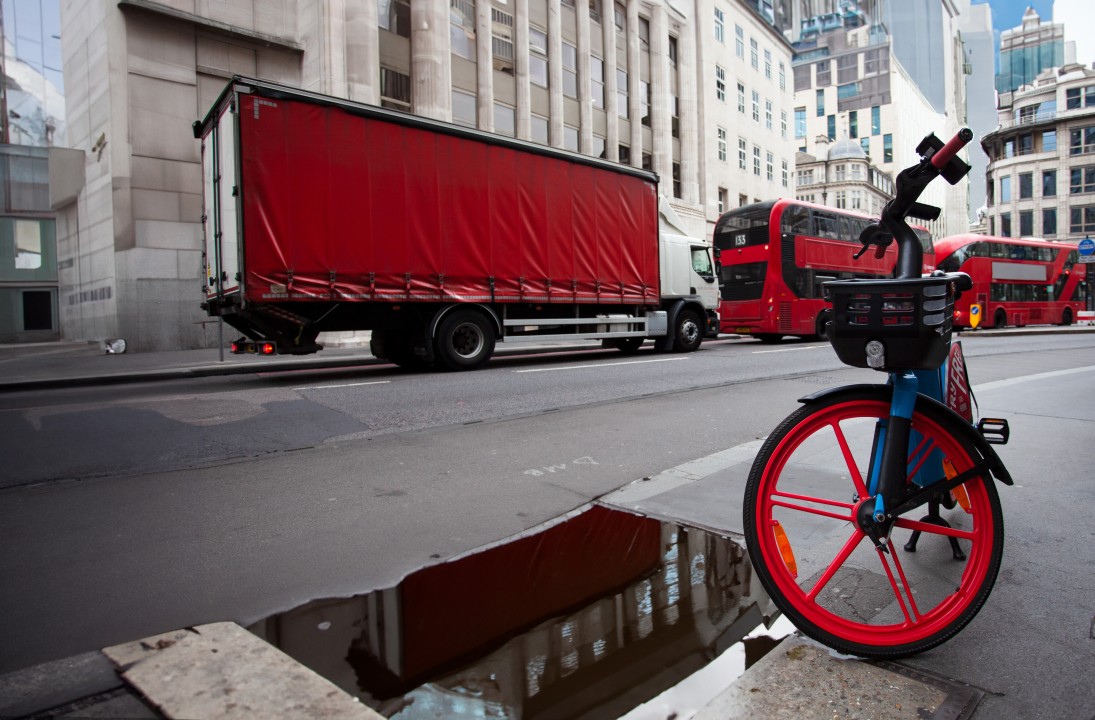
Susie Jones
Cinci mituri legate de transporturile rutiere, demontate
Creat: 19.08.2024
•
Actualizat: 19.08.2024
De secole, conducerea camioanelor reprezintă coloana vertebrală a comerțului global - livrând bunuri și produse esențiale în întreaga lume. Cu toate acestea, în ciuda rolului său esențial, transportul cu camionul a fost mult timp învăluit în mituri și concepții greșite.
Deși unele dintre aceste mituri sunt luate în serios, altele pot dăuna industriei camioanelor și celor care lucrează în cadrul acesteia. Prin urmare, este extrem de important să dezmințim aceste concepții greșite pentru a ne asigura că șofatul de camion rămâne o alegere de carieră atractivă pentru generațiile viitoare. Am întrebat comunitatea noastră de șoferi de pe Facebook despre unele dintre cele mai mari mituri pe care le-au auzit de-a lungul carierei lor.
1. Șoferii de camion stau jos toată ziua
"Tot ce fac șoferii de camion este să stea jos toată ziua". O frază des auzită de camionagiu, Luke.
Lumea camioanelor înseamnă mai mult decât să conduci. Șoferii de camioane lucrează adesea cu alte persoane la terminale, docuri și depozite pentru a descărca și încărca mărfuri. Nici în spatele volanului nu este totul ușor. Camionagii trebuie să se concentreze asupra manevrelor vehiculelor lor și trebuie să respecte reglementările stricte ale tahografului. O bună cunoaștere a zonelor în care pot și nu pot conduce este imperativă, precum și conștientizarea pericolelor potențiale.
2. Toți drumarii sunt bărbați
Acesta este un stereotip învechit care nu reflectă realitatea modernă din domeniul autocamioanelor. Recent, a avut loc o schimbare semnificativă în raportul dintre șoferii de camion bărbați și femei. În 2021, femeile șoferi reprezentau doar 1% din cei 315 000 de șoferi de camion din Regatul Unit. Cu toate acestea, acest număr crește de la an la an pe măsură ce industria evoluează și îmbrățișează incluziunea. Șoferi precum Jodi Smith sunt avocați de neprețuit pentru femeile din industrie. Jodi își documentează online experiența de camionagiu, inspirându-i pe alții să urce la volan.
3. Oricine poate conduce un camion
Mulți presupun că dacă pot conduce o mașină, sunt capabili să conducă un camion. Cu toate acestea, conducerea unui camion necesită un set de aptitudini unic, care poate să nu fie potrivit pentru toată lumea. Pentru a conduce un camion comercial este nevoie de un certificat de competență profesională pentru șofer (CPC). Pentru a obține un CPC, șoferii trebuie să susțină cinci teste:
Teoria
Studiu de caz
Exerciții off-road
Conducerea pe șosea
Demonstrații practice
În plus, condusul de camioane necesită un stil de viață care nu este pentru toată lumea - cu ore lungi izolate pe drum, care prezintă adesea provocări neașteptate.
4. Distanța de frânare
"Șoferii de autoturisme cred că distanța de frânare a unui TIR este aceeași cu cea a unei mașini" este un lucru pe care șoferul de camion Paul l-a auzit de prea multe ori.
Distanța de frânare a unui camion este semnificativ diferită de cea a unei mașini din cauza mai multor factori: - Greutatea: greutatea totală a unui camion încărcat cântărește mai mult decât o mașină obișnuită, ceea ce înseamnă că va avea nevoie de mai multă forță pentru a încetini și a se opri
- Mecanică: sistemul de frânare al unui camion este adaptat pentru încărcături grele, ceea ce înseamnă că are axe și componente de frânare mai mari și mai robuste - ceea ce duce la timpi de răspuns mai lungi și distanțe de frânare mai mari.
La 100 km/h, un camion are nevoie de 132 m pentru a frâna, comparativ cu 73 m pentru o mașină - subliniind importanța de a lăsa suficient spațiu între tine și un camion atunci când frânezi puternic.

5. Camionagii sunt murdari
De-a lungul anilor, șoferii de camion au primit stereotipul de murdari și leneși - o generalizare nedreaptă. Mulți șoferi pe distanțe lungi petrec mult timp departe de casă și în cabina lor - ceea ce înseamnă că igiena și curățenia cabinei lor sunt o prioritate.
Este esențial să risipim miturile și concepțiile greșite legate de conducerea camioanelor pentru a înțelege mai bine această profesie. Dezmințirea unora dintre miturile comune va crea o industrie mai atractivă pentru generațiile viitoare și va crește gradul de conștientizare a conducerii de camioane ca o profesie cu înaltă calificare care joacă un rol vital în economia noastră.
Drumarii se simt singuri?
Înainte de a lua în considerare o carieră ca șofer de camion, este esențial să înțelegeți ce presupune această meserie. O problemă pentru mulți șoferi de camion este singurătatea - orele lungi pe șosea cu comunicare redusă sau inexistentă sunt dificile pentru unii, dar un vis pentru alții.
În plus, timpul petrecut departe de cei dragi îi poate afecta pe mulți. Cu toate acestea, a devenit mai ușor pentru șoferi să comunice cu prietenii și familia prin telefon sau apel video. Există, de asemenea, o mulțime de forumuri și sfaturi utile la dispoziția drumarilor pentru a atenua singurătatea.
Poate un șofer de camion să aibă un al doilea loc de muncă?
Întrucât Marea Britanie trece prin criza costului vieții, tot mai mulți șoferi iau în considerare un al doilea loc de muncă. Cu toate acestea, angajarea secundară prezintă probleme și riscuri, în special în lumea camioanelor. Înainte de a merge mai departe, șoferii trebuie să analizeze dacă există o politică de angajare secundară în cadrul companiei lor.
Atunci când creează o politică de angajare secundară, companiile și operatorii ar trebui să ia în considerare efectele asupra performanței, prezenței și oboselii șoferilor. Ca să nu mai vorbim de menținerea conformității cu normele privind orele și timpul de lucru al șoferilor.



